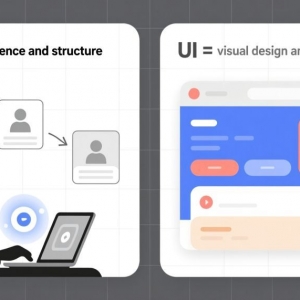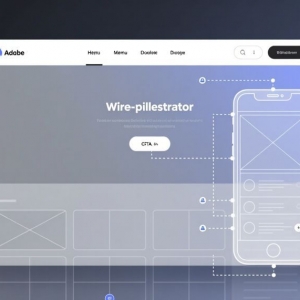A website isn’t just a visual display—it’s a functional tool designed to guide users, solve their problems, and prompt action. Great design makes this seamless, while poor design creates friction. But you can’t always tell the difference by looking. What seems clear to you might confuse visitors. What looks professional might fail to convert. Analytics provides the evidence needed to know for sure. For businesses, it shows if the site achieves their goals. For a web designer, it’s a guide to craft a more effective user experience.
The Role of Analytics
Designing without analytics is like navigating without a compass. You might think a bold slider grabs attention, but data could show users ignore it. You might assume a form is easy to use, yet analytics might reveal users abandon it early.
Web design services that use analytics make informed choices. They rely on evidence, not guesses, to guide creativity, ensuring designs are both beautiful and practical. This approach blends art with functionality.
Mapping User Behavior
Analytics does more than count visits—it reveals how users interact. Heatmaps highlight where users click, pause, or stop scrolling. Session recordings capture their journey in real time. Reports show which pages draw users in and which push them away.
This insight directly informs design. If a landing page has high traffic but low conversions, a Singapore web designer might simplify its layout, clarify the messaging, or reduce visual clutter. Simple metrics like bounce rates (when users leave quickly) or conversion rates (when users complete goals like buying or contacting) offer clear clues for improvement.
Refining Design Gradually
Websites aren’t set-and-forget—they evolve. Analytics makes that evolution smarter. Suppose a service page gets visits but few inquiries. The issue might be a cluttered layout or an unclear button. A web designer can test a cleaner design or a more prominent button, then measure the impact.
Navigation also benefits from analytics. If users keep searching for “FAQ” or “products,” those pages aren’t easy to find. Adding them to the homepage or menu, guided by data, improves usability. Each data-driven tweak strengthens the site over time.
Linking Design to SEO
Search engines favor sites that keep users engaged. If visitors stay, explore, and act, rankings climb. If they bounce quickly, rankings drop. Analytics reveals what users value, allowing a web designer to emphasize those elements. For instance, if blog posts drive traffic, web design services might showcase them on the homepage. If product pages retain users, streamlining their design can boost conversions.
This link between analytics, design, and SEO is powerful. Search engines track user behavior, not just code. A user-friendly site naturally performs better in search results.
Making Data Actionable
Analytics can flood you with numbers—visits, time on page, exit rates. The challenge is turning them into decisions. If 65% of users leave a homepage in under 12 seconds, it’s not just a number—it’s a sign the page isn’t working. A web designer might simplify the design, sharpen the headline, or highlight the call-to-action.
Web design services excel when they distill data into clear recommendations. They don’t bury clients in graphs—they highlight what to fix and why, ensuring changes drive results.
What Businesses Should Watch
Business owners don’t need to be data experts, but they should monitor core indicators:
- Where traffic comes from (search, social, direct).
- Which pages hold attention longest.
- Where users exit the site.
If most traffic is mobile but the site isn’t optimized for phones, that’s a design issue. If one page drives most conversions, it’s worth emphasizing. A web designer who uses analytics can turn these signals into impactful updates.
Pitfalls of Skipping Analytics
Ignoring analytics hides design flaws:
- A homepage that looks great but confuses users.
- Important content tucked away in subpages.
- Calls-to-action lost in long scrolls.
- Valuable content not promoted effectively.
These problems aren’t always visible without data. Without analytics, businesses may see fewer leads or sales without realizing the site is the issue.
Analytics as a Feedback Loop
The best analytics use is cyclical: measure, tweak, measure again. Each cycle hones the site. For instance, an online retailer sees users abandon carts. The web designer simplifies checkout, removing extra steps. Analytics shows fewer drop-offs. Later, data reveals hesitation at shipping costs. Another tweak follows. This ongoing loop keeps the site aligned with user needs.
Final Thoughts
Analytics shifts website design from intuition to precision. It shows what users do, not what you think they do. For businesses, it’s the difference between a site that looks good and one that performs. Web design services that harness analytics deliver purposeful, evolving solutions. A web designer who leans on data builds more than a layout—they craft a tool that grows with the business.
At its heart, analytics is about people. The data reflects their actions, challenges, and preferences. When design is guided by those insights, a website becomes more than a digital presence—it becomes a vital, responsive asset.











